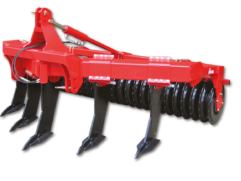Alleviating soil compaction
Preventing or reducing the impact of compaction
Given the nature of our climate and the necessity to carry out certain farm operations, it is probably inevitable that some soil compaction will take place. Very shallow surface soil compaction can be removed by the natural processes of wetting/drying and freeze/thawing and biological action. Severe compaction is more persistent and will not be removed by natural processes in the short term, even if the cause of the original compaction is removed.
The most cost effective way to deal with soil compaction is to adopt management strategies to avoid or reduce the risk of soil damage.
1, Match operation to the nature and condition of the soil. In essence stay off wet soils.
If possible postpone machinery operations to fields for 48 hours after heavy rainfall, or remove or reduce stock on susceptible fields. Good timing of field operation is probably the single most important aspect to preventing soil compaction.
2, Reduce total axle loads (ideally below 5 tonnes).
The higher the axle load the more potential for soil compaction and to a much greater depth in the soil profile. High axle loads in wet conditions can cause compaction from the surface to the subsoil. For instance, the use of umbilical systems for the spreading of slurry is one technique for significantly reducing axle weight while having no impact on the operation carried out.
3. Reduce ground contact pressure.
With regard to vehicles, larger tyre diameter and width in combination with lower inflation pressure will reduce the severe compaction potential. In this context tandem axle have been shown to be better than dual wheels. Correct tyre pressure depends on weight to be carried and speed of travel. Once these are known, the appropriate tyre pressure can be chosen from the manufacturer’s recommendations. It is preferable to run tyres at the lower end of the recommendation scale. With regard to animal compaction, stock on high tillering dense swards will have less of an impact than on open swards or recent reseeds.
4. Use of farm tracks.
As the majority of compaction is caused in the first few trips it may be worth designating a ‘sacrifice’ strip where the field traffic can be concentrated. This has the effect of reducing the total impact of compaction to a known area which can be mechanically alleviated, if need be, at a minimum of cost. With animals, especially dairy cattle, access to and from milking should be via hard standing laneways as much as possible.
If a compacted zone is identified it can be removed with a number of different types of soil loosening machines. All of these (apart from aerators) work on the principle of fracturing soils along natural lines of weakness, essentially the soil is lifted and loosened as the device passes through, decreasing bulk density, increasing porosity and drainage rates. Care has to be taken that work is only carried out when the soil is dry enough to fracture rather than deform, and to minimise trafficking across the loosened area for a number of days to allow the soil to stabilise. Another important consideration is the existing drainage network; any proposed subsoiling would have to be no deeper than the shallowest drain.
i) Subsoiler/Shakerator/Paraplough
A subsoiler consists of one or more vertical legs with a horizontal wing at the bottom, which is capable of being worked at various depths in the soil (maximum
of usually 60-70 cm). The angle of the wing can be altered to achieve a low or high degree of lift of the soil. In existing grassland a low lift is recommended as minimum surface disturbance is achieved. Another important consideration is the depth at which the implement is used. Each subsoiler has its own critical depth (usually taken as six times the loosening wing width). Use of the implement below this critical depth will cause further compaction.

A Shakerator is essentially a subsoiler with a vibrating module attached – the vibration induced in the tines has the advantage of reducing the draught required to pull the unit.
A Paraplough is also a tined implement but differs from the conventional subsoiler in that its legs are slanted, 45 degrees from the vertical. It is designed to leave a relatively undisturbed surface, with a maximum working depth of about 35 cm.
ii) Aerators
Common aerating devices work to a slightly different principle to subsoilers in that they act from the surface down rather than the sub surface up. Essentially these devices push a blade into the ground increasing air and water entry into the soil. The devices can either be of a straightforward type that create a slit in the soil or the
blades can be offset to produce a rotational cut.
iii) Cultivation
Normal cultivation will of course remove any near-surface compaction. This is a worthwhile option to consider where significant poaching has occurred, which can allow the ingress of other lower productive grass and weed species.
iv) Management
This can include the addition of lime (which can improve soil structure and promote earthworm activity), addition of gypsum (help to promote structural stability in heavy clay soils) addition of organic matter (in the case of soils with inherently low organic matter, this too will promote structural development).
